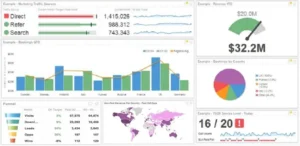Integrating Salesforce with an ERP system
To integrate Salesforce with an ERP system, you need to connect the two systems so that they can share data and information. Integration happens using an integration platform or a middleware solution that bridges the two systems. The integration platform allows you to easily map the data fields from one system to the other to share and update the information in real time. Additionally, you may need to set up a schedule for the data to be synced between the systems to be always up-to-date. You must also establish security protocols to ensure data protection during integration.
What are the best and most popular middleware solutions for Salesforce to ERP integrations?
There are several middleware solutions that are commonly used for Salesforce to ERP integrations. Some of the best and most popular options include:
- Informatica Cloud: A cloud-based integration platform that allows for the integration of Salesforce with various ERP systems. It supports multiple data formats and protocols and offers a user-friendly interface for mapping and syncing data.
- Boomi: A cloud-based integration platform that allows for the integration of Salesforce with various ERP systems. It offers a drag-and-drop interface and supports both real-time and batch integration.
- Mulesoft: A widely used integration platform that allows for the integration of Salesforce with various ERP systems. It offers a variety of pre-built connectors and supports a wide range of data formats and protocols.
- Jitterbit: An integration platform that allows for the integration of Salesforce with various ERP systems. It offers a user-friendly interface for mapping and syncing data and supports real-time and batch integration.
- SAP Cloud Platform Integration: SAP Cloud Platform Integration allows for the integration of Salesforce with various ERP systems, including SAP systems. It supports multiple data formats and protocols and offers a user-friendly interface for mapping and syncing data.
It’s important to note that all of the above solutions are powerful. Still, the best middleware solution will depend on the specific needs of your organization and the systems you are integrating. Therefore, it’s advisable to consult with an integration expert like Cloud Next Level to help you choose the right solution for your organization.







